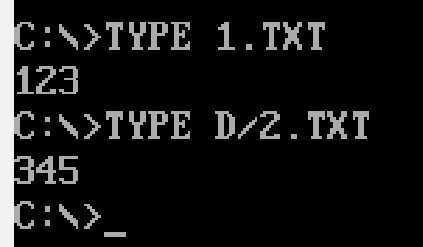Run without bundle
As explained in other topics, the bundle is a preferred way to run DOS program. Bundle can contain much more configuration that DOSBox excepts, for example, mobile controls, resources, etc.
Provide dosbox.conf directly
js-dos can work without a bundle, but at least it needs a DOSBox config file to start. You can create js-dos player by providing config using javascript:
Additionally, you can provide jsdos.json configuration, for example, here we start js-dos with one virtual button.
Having config allows you to start DOSBox / DOSBox-X, but it is not very useful without a program to run. To init FS before emulation starts, you need to use initFs property. It's a sequence of files, in the following format:
Where path is a full path to file, contents is a body of file.
Using the following snippet you will create two files:
1.txt with contents "123"
2.txt in directory D with contents "345"
Now when you run it, you can check your files with TYPE command:
